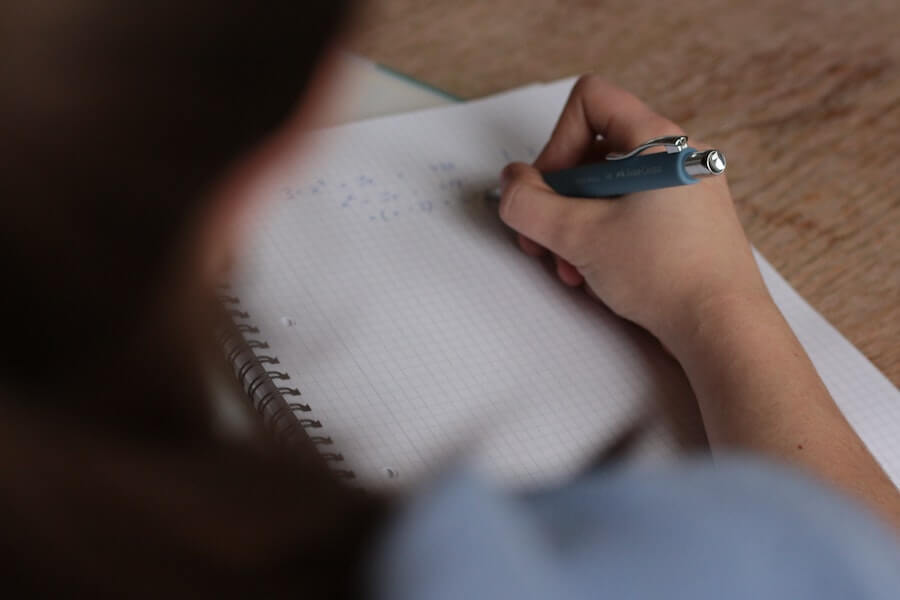Effective studying requires more than just memorising facts and figures. It involves a deep understanding of the subject and the ability to apply that knowledge.
One technique that has gained popularity among students is the blurting method. This approach involves writing down all you can remember about a certain topic or subject in a short amount of time. This blurting revision technique works by activating your working memory and enhancing your understanding of the subject matter. Intrigued? Here’s all you need to know about the blurting method, including how to do it, why you should and some alternatives to try if it doesn’t work for you.
What Is The Blurting Revision Method?
The blurting revision is exactly what it sounds: essentially, you ‘blurt’ out information from memory onto a page until you can’t remember anything else about the specific subject. It works to test your knowledge of a subject so you can see which areas you know well and which you are struggling with.
What Can You Use Blurting For?

You can use the blurting revision method for almost any topic or subject. Usually, students find themselves focusing their revision on the high-detail areas of a subject, neglecting the smaller topics and often missing them out all together. This is where blurting can come in useful. Using the blurting method helps to highlight the areas of a topic that you are struggling with or missing out altogether, helping you to focus your revision on these smaller subtopics that you may otherwise have neglected. Working this way will also help you save valuable time so you don’t revise the wrong areas.
Since blurting doesn’t require hours of preparation or extra studying, you can use the technique for revising within a short time frame. The time that you take to blurt out your knowledge will depend on the size of the section of material that you are blurting from. So, for example, if you are working from a short chapter of a textbook, you can allow yourself three minutes to write down everything you can. This is a much more efficient method than other revision techniques.
What Are The Benefits of The Blurting Method?
There are many benefits to using the blurting revision method over other studying techniques. Some of the main advantages of revising using the blurting method include:
- Less Time-Consuming – Since the length of time blurting takes depends on the size of the source material that you are attempting to remember, the blurting method is usually more efficient and less time-consuming than other revision methods.
- Highlights Areas to Focus On – With blurting, you can easily determine which areas of a topic you already have great knowledge in and which ones may require a bit more work. So, from this information, you can tailor your future revision around these subjects.
- Works Both Short Term and Long Term Memory – When doing blurting revision, you are putting key information into your short term memory. You can then transfer this knowledge into your long term memory, so you will have it prepared when it comes to your exam.
- Breaks Down A Topic – Tackling big topics is a hard task in revision, but blurting helps you to break these large subjects down into bite size chunks.
Who Does Blurting Work For?
Blurting is a wonderful revision technique for anyone to try independently. However, it also works particularly well in groups. So, if you are planning to revise for a friend or want to put together a study group, you could suggest that you all try the blurting method to help you with your revision. Blurting is a flexible technique, so you can modify it to fit the needs of you and your peers.
How To Do Blurting Revision

The basics of blurting are simple: look through your source material or noted information about the subject, and time yourself to write down as much about this topic as you can. However, to get the most out of blurting revision, there is a certain technique that is best to follow. Here’s how to do blurting revision in a few steps:
- First, choose your topic. In order for blurting to be effective, you should choose one simple topic to focus on for each round of revision, rather than a whole subject or spectrum of information. For example, this could be the answers to a practice paper or a single chapter of a novel or textbook. On the other hand, some students choose to create their own prompt sheet to study from.
- Next, study your topic. Once you have decided on your topic for this round of blurting, you should study it in preparation. It’s best to set a time limit for this, so you don’t get too engrossed in reading or studying intently.
- Then, start your blurting time limit. Blurting relies on a short spurt of time for you to jot down as much about your chosen subject as you can remember. So, once you have revised your topic, set your sources aside and set a fair time limit. For example, you could set yourself 3 minutes to note down all you remember about a short chapter of a book, or 10 minutes to remember past paper answers.
- Now, blurt! With your studying complete and time limit set, you can start blurting. Use a pen and paper to write down all you can remember about your chosen subject or source material. It doesn’t matter whether the details you are noting down are big or small – just get them down as quickly as you can. Once the time limit is up, stop writing.
- Don’t forget to mark your revision! Marking and checking over your blurting writing is one of the most crucial steps. Check over your writing and see how it compares to the source material. Have you misremembered certain facts? Got dates or statistics wrong? Completely missed out certain bits of information? Now you can correct these on your paper to help ensure the right information is transmitted to your long term memory.
- Finally, prepare for the next session. Once you have corrected and marked your work, you should see where the gaps in your knowledge are and know which parts to revise for next time. So, wait a few days and schedule another blurting revision session. Then, repeat this process and ensure that the knowledge is committed to your memory.
Alternative Revision Methods To Blurting
Unfortunately, there is no one size fits all when it comes to revision. So, blurting may not work for you. However, there are plenty of other revision techniques that you may find helpful! We have some alternative methods to blurting that you can try to find the right approach to revision.
Read about more revision techniques in our article explaining What Is Revision?
Online Courses
Home learning courses are a fantastic tool for revision, since they will work and adapt to your schedule. With online learning courses, you can choose a subject or topic that you are particularly struggling with and get lessons catered to help you better understand the information in preparation for your examinations.
Teach Another Student
Study groups are always highly recommended, but have you ever thought about teaching someone else to help consolidate your own knowledge? In many exams, examiners are looking for you to explain your answers in detail. Being able to verbally do this to a friend, family member or perhaps a teacher can help you get your methodology and processes straight in your mind and ensure they translate well in writing.
Try Blurting For Yourself

The blurting revision method is an effective study technique that can help students improve their learning outcomes. By quickly jotting down all your thoughts and ideas about a topic without worrying about structure or organisation, you can activate your working memory and enhance your understanding of the subject matter.
Don’t want to have to revise? Check out some of the easiest A levels you can take for a breezy college experience!








